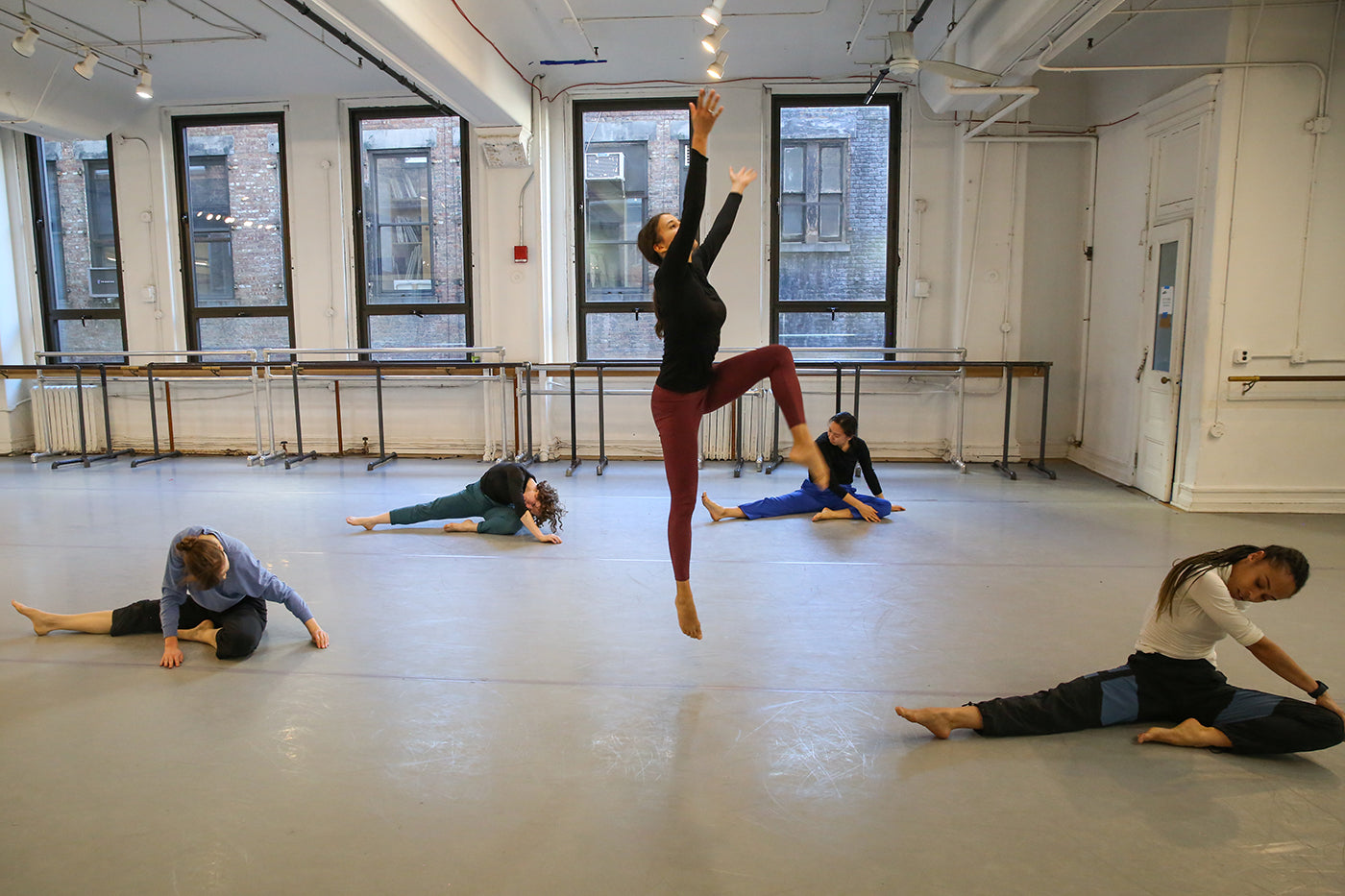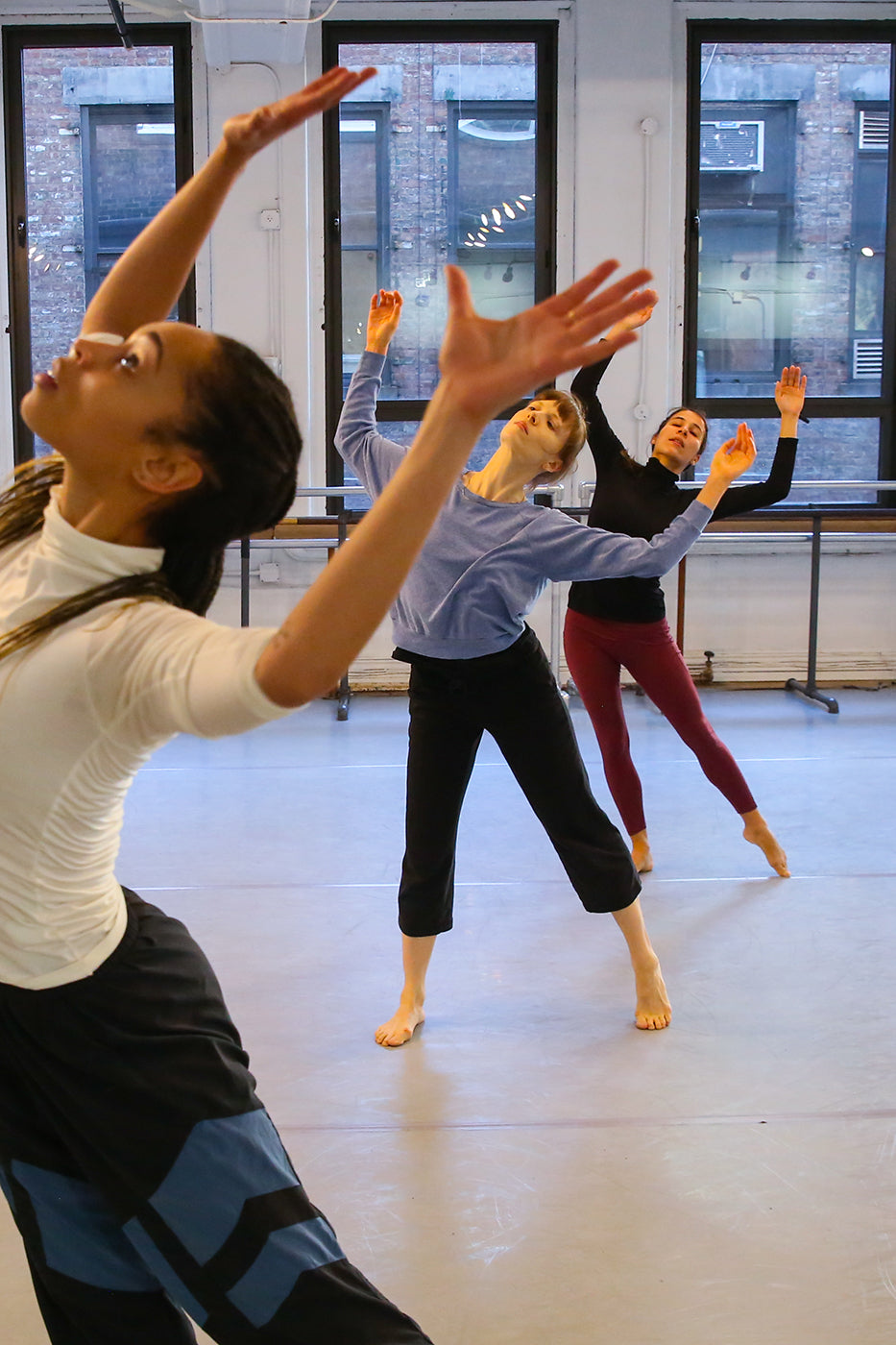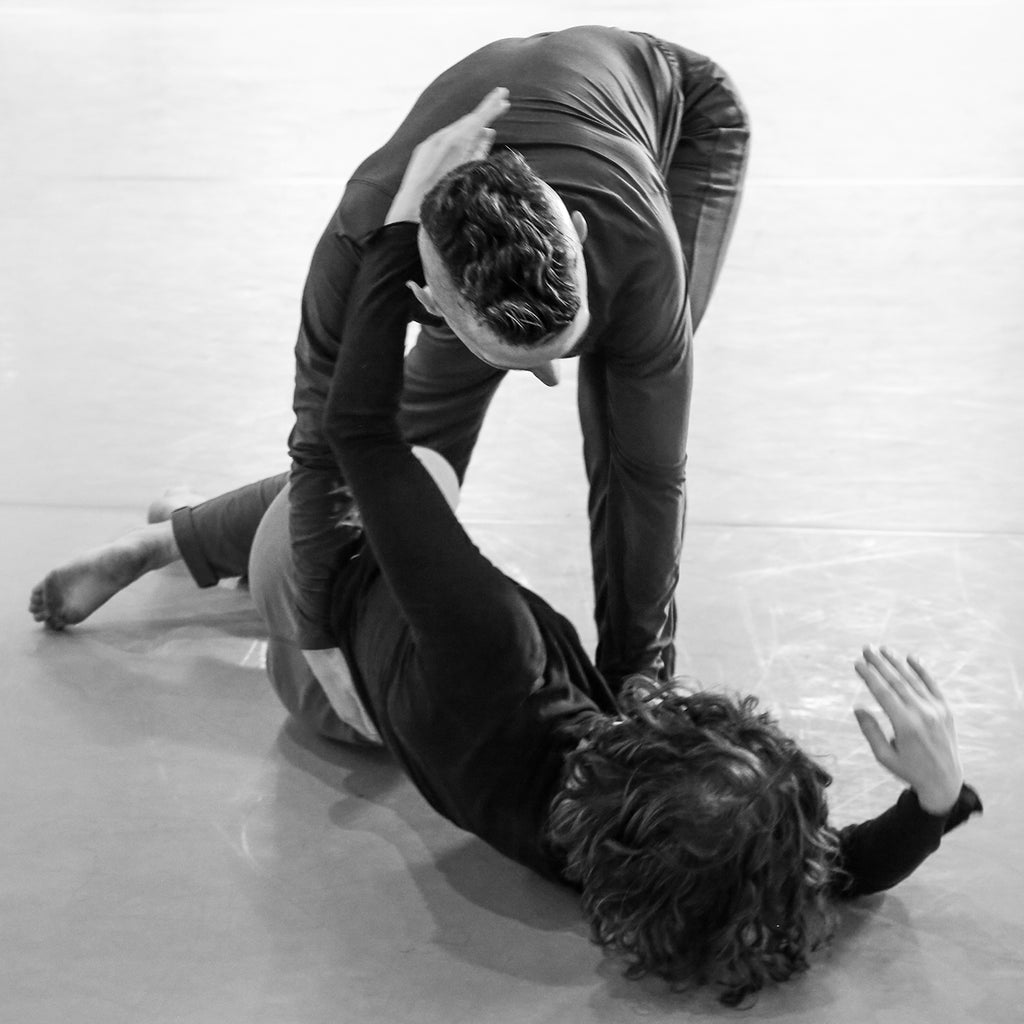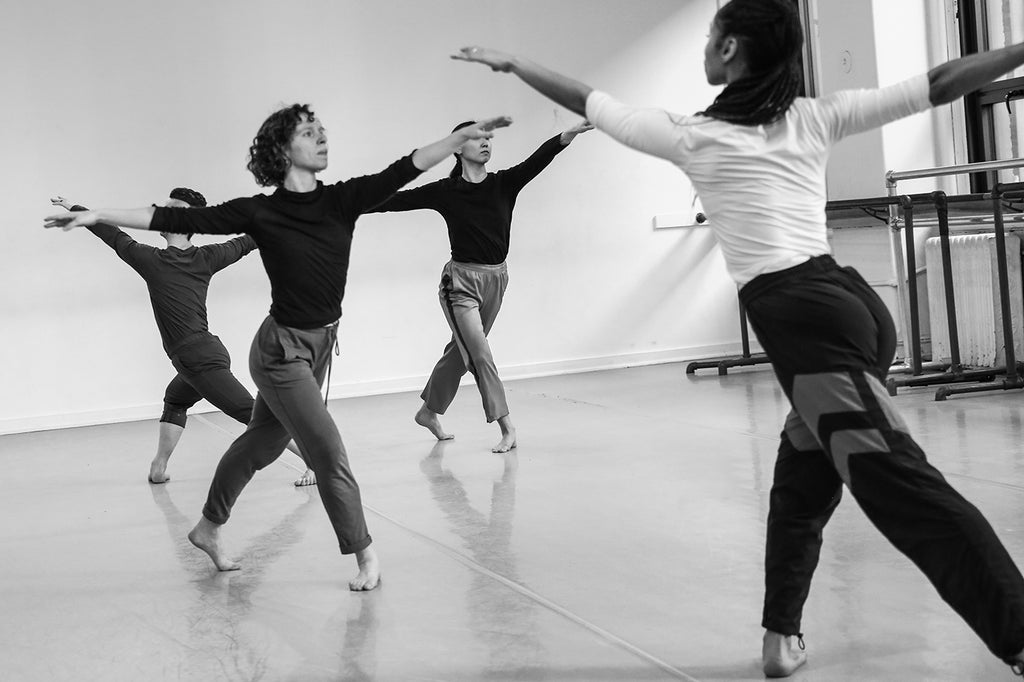This section is the show’s climax, and when done full out there is much jumping and lifting. Today, those who lift are absent, so the partnerless pantomime by raising their arms in a V. “Let’s do it again,” says Williams. “This time to find out what you don’t know about it.” Mykel Marai Nairne stops to clarify a particular move for Echerer. “That’s an upper body curve, not a pike,” Williams points out, and stands to demonstrate the difference, flexing and straightening her back.
“Smile,” when complete, will clock in at 65 minutes. There are nine sections of instrumental music, with five shorter vocal sections interspersed. Williams takes three solos—cameos, she says—each about three minutes. The composer herself will accompany Williams on one. My sense of the work is piecemeal at this point, with only snippets of the delightful music and incomplete samples of movement. Yet I am swept into the pride and collaborative energy in the room. The dancers are pure pleasure to watch—mid-career professionals in their thirties, most of this group were in Williams’ work four years ago. That they’ve returned is testament to the project.
“People say it’s kind of crazy to do something at this scale,” Williams says. “I want to not feel afraid to just make something on a scale that really fulfills my vision. You only have one life,” she adds. “What are you waiting for? I’m in that mode right now. I’m excited, the dancers are excited, the musicians are excited, we’re ready to perform.”
“Smile, though your heart is aching” will be performed April 5, 6, and 7 at the James and
Martha Duffy Performance Space of Mark Morris Dance Center in Brooklyn, New
York.












comments